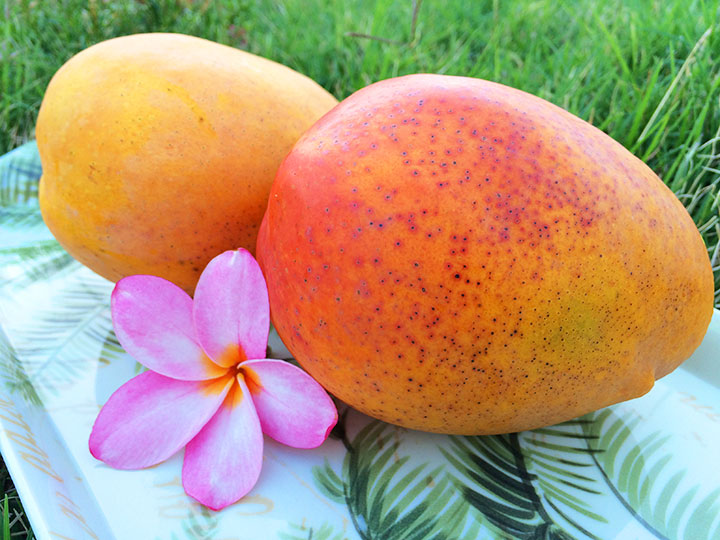
Photo courtesy of Napua Heen.
As a child, one of my favorite places to spend my time was in a mango orchard. I would scour the leaf covered floor bed for a freshly fallen mango. I looked for the bright yellow color, usually with a shade of red. I’d pick up my prospective gem and turn it over in my hands checking for brown spots or blemishes. I’d squeeze the fruit gently. If it had too much give, it was no good. I’d hold my new prize close to my face and take in the sweet aroma. Mmmm! I’d found a perfect mango.
Hawaiian Mango Varieties
The three most widespread varieties of high quality Hawaiian mangoes are Rapoza, Haden, and Pirie. They all have an exceptional flavor and are fibreless.
Rapoza
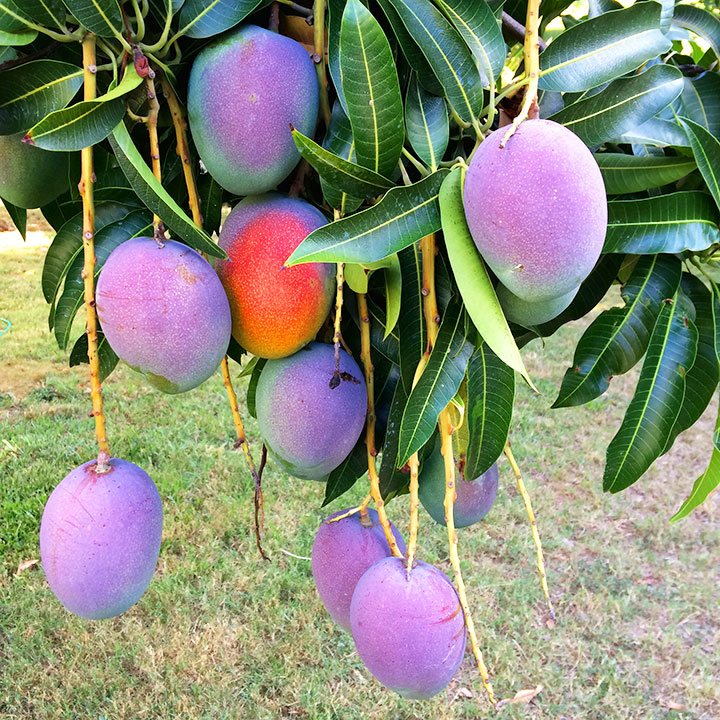
Rapoza Mangoes ripening on the tree. They start off green, turn purple and finally ripen into a bright yellow. Photo courtesy of Makaha Mangoes.
The variety of mango from my childhood story is the Hawaiian Rapoza. It is known for having ripe skin that is yellow with a red or purple blush.
Hayden
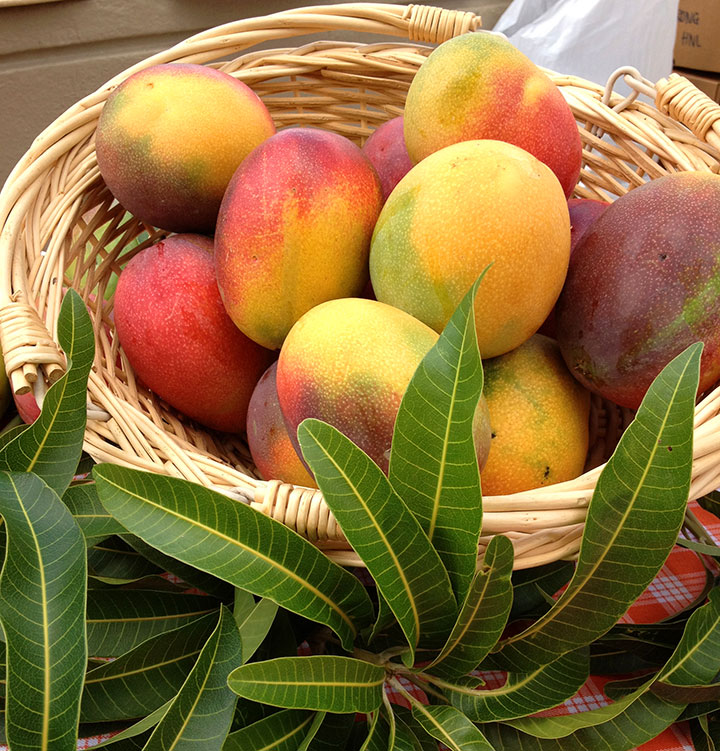
These brilliant Hayden mangoes are ready to be eaten! Photo courtesy of Makaha Mangoes.
The Hayden is probably the most popular and easiest to find of the Hawaiian varieties. The ripe skin is red, yellow, and green.
Pirie
The Hawaiian Pirie is an older variety. The ripe skin tends to be more yellow and green than red.
Other Hawaiian Varieties
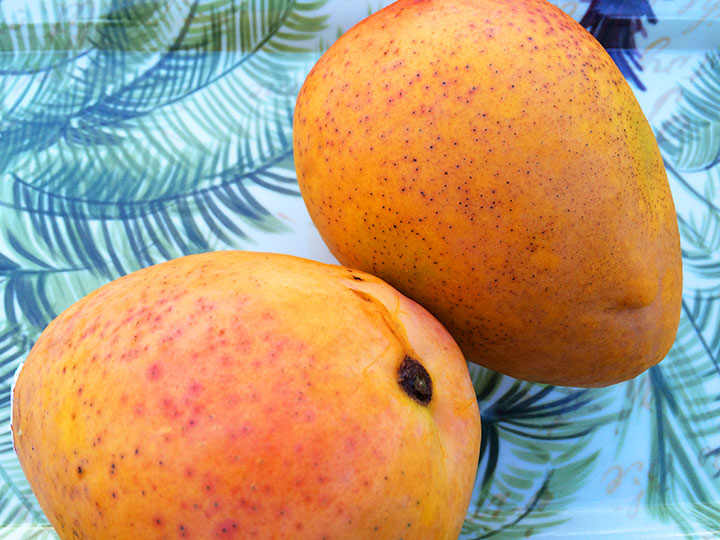
Golden Glow variety from Yee’s Orchard on Maui. Photo courtesy of Napua Heen.
Other more regional varieties include: Oahu’s Gouveia, Molokai’s Mapulehu, and Maui’s Golden Glow.
Growing Season in Hawaii
Mango trees produce flowers from December through April. The trees will begin to bear fruit in May with peak season being July and some trees giving fruit as late as October. They prefer hotter drier areas and can grow over 100 feet tall.
A Taste of Hawaii
Local farmer’s markets are the best place to find fresh mangoes. Sometimes, the farmer’s will even be able to share with you the story behind the fruit. Many mango strains are unique to certain areas or only grown by one family. Mangoes, like people, have a heritage. Hawaiian mangoes can also be found in local grocery stores like Foodland and Whole Foods.
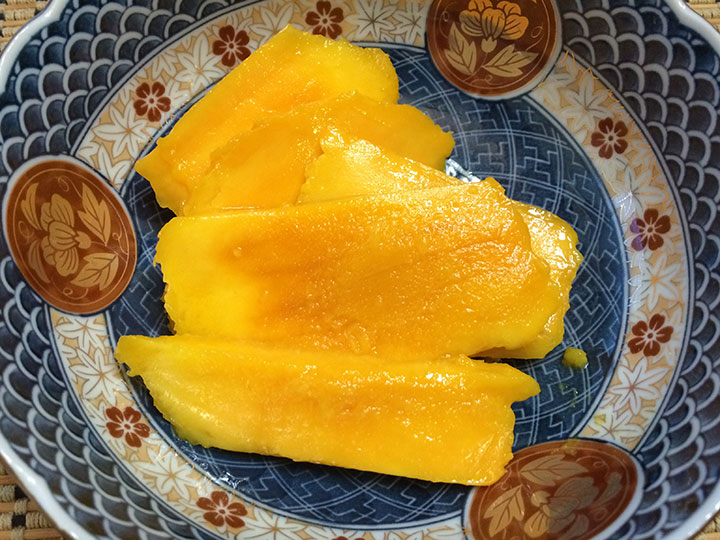
Fresh cut mango. Photo courtesy of Napua Heen.
Besides being enjoyed in its pure form, mangoes are crafted into island dishes of every variety like shave ice, salsa, and cheesecake. Mango also comes dried, pickled and frozen (mango ice cream, anyone?). During mango season in Hawaii, you can expect to find chefs across the islands taking advantage of the abundance of fresh fruit to create new mouthwatering mango dishes.
Nutrition & Allergies
Besides being very delicious, mangoes cover the ABC’s of nutrition. They contain Vitamins A, B6, and C. Mangoes also provide fiber, folate and copper. They’re a wonderful superfood! But, beware. Many people are allergic to this fruit. Both the sap and the inner flesh can cause allergic reactions. So, if you’ve never eaten a mango before, sample slowly.
Mango on My Mind
Driving along the curving, tropical roadways of Hawaii, the bright yellows and reds catch my eye. I see the sweet heavy fruit ripening in the warm sun, and my mind wanders back to the orchard of my childhood and my search for the perfect mango. May you find your perfect mango!







